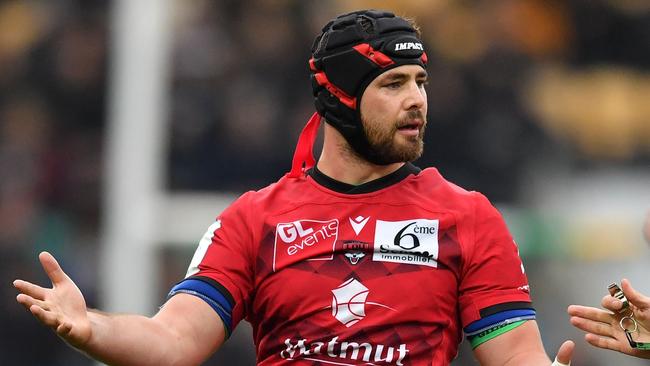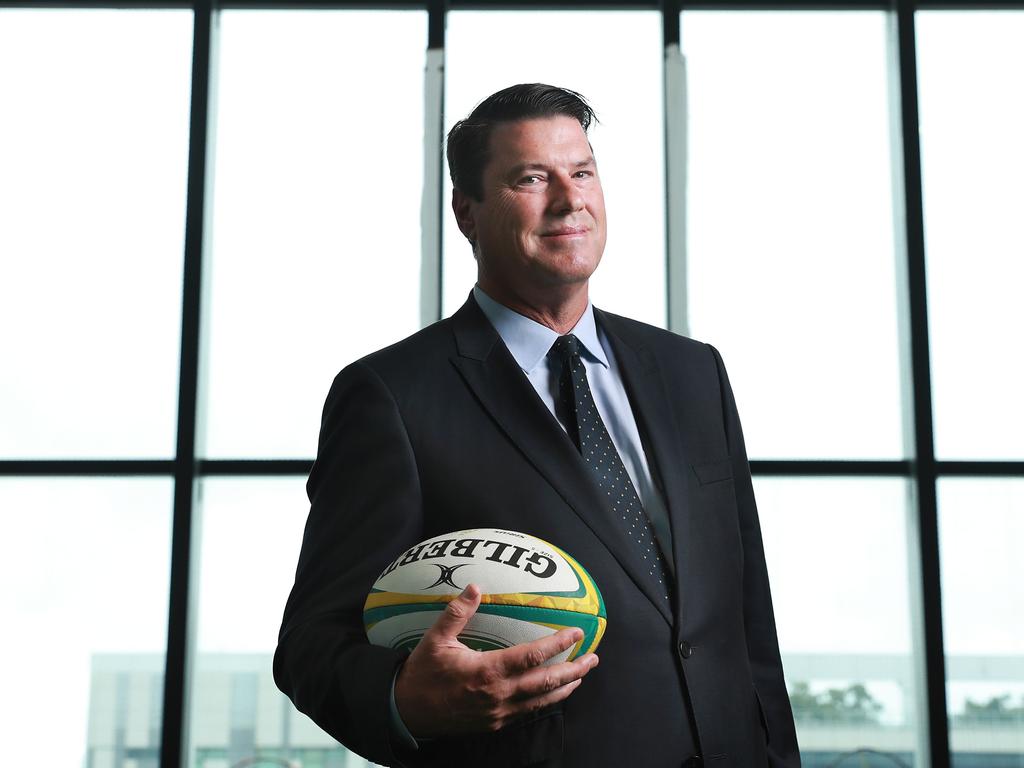Players seeking safe haven while Australia rides out rugby’s storms
Three successive Wallabies coaches rated Liam Gill a lesser openside flanker to Michael Hooper.

Robbie Deans played him off the bench behind Hooper, so too Ewen McKenzie, who had been Gill’s coach at the Queensland Reds. He has 15 Test caps, every one earned as a substitute. Michael Cheika didn’t play him at all.
Gill hung around for a couple of seasons, trying to convince the Wallabies coach of his worth, but Cheika had Hooper and he had David Pocock and there simply wasn’t room for the Queenslander. So he left and joined Toulon in 2016. Then he left Toulon and joined Lyon in 2017. And there he has remained, highly valued and uncomplaining. That prompted this evaluation from the Lyon assistant coach, Kendrick Lynn: “Liam is one of the best players I have ever seen. No matter the week, it didn’t matter if he was a little injured or that he was not in his best form, he was going to give everything, come out bloodied and exhausted.”
Gill has now left Lyon and, according to some reports, was heading back to Australia. Sadly, that seems to not be the case.
The Reds were never serious candidates to get him back, not with Liam Wright as their captain and Fraser McReight putting almost impossible pressure on Wright for the openside jersey.
Dave Wessels, the Rebels coach, always wanted to bring Gill back to Melbourne, the city where he was born. But after investing a considerable amount of time in him, he now accepts the fact that Gill is headed to Japan.
Under normal circumstances this might have provoked another diatribe against player agents and how some of them work against the best interests of Australian rugby. But not today. The fact is it is anyone’s guess what is in the best interests of Australian rugby these days.
South Africa looks to have pre-empted the other southern hemisphere countries by giving its professionals a 21-day window in which they could request termination of their contracts with Super Rugby sides. It was purely a cost-cutting measure. First, came the announcement that hooker Malcolm Marx was leaving the Lions, which had pretty much been telegraphed months ago. And then on Sunday the World Rugby Player of the Year, Steph du Toit, also beat the May 14 deadline. He reportedly is heading off to France.
Fellow Western Cape players Cobus Wiese and Jean-Luc du Plessis also have requested contract terminations before the deadline and will be leaving the Stormers. Earlier, two other Stormers players, Dillyn Leyds and Wilco Louw, had indicated they would be leaving the club at the end of the 2020 season. Australia watched on anxiously.
South Africa is far more accustomed to its best players heading abroad, having abandoned its version of the Giteau Law back in 2018. But with the possible exception of World Cup-winning captain Siya Kolisi, du Toit and Marx would have been at the top of the list of players it would have most wanted to retain.
So was this a glimpse of Australian rugby’s future?
Kurtley Beale has recently announced his signing with French club Racing 92, but all indications are that this had nothing to do with COVID-19. After 92 Tests, he had worked out he is unlikely ever to be selected again for Australia.
No, the real impact on Australia will not become apparent until the deal brokered recently between Rugby Australia and the Rugby Union Players Association for the country’s 192 professional players to take an average salary cut of 60 per cent expires on September 30. True, the expiry date can be brought forward if some version of Super Rugby begins before then but, at least until a start-up date is named, September 30 is what everyone is operating off.
There will, inevitably, be players who want out. But they may find the international market is not quite as welcoming as it once was. COVID-19 or not, Australian players aren’t the flavour of the month that they once were, with overseas clubs far more likely to target South Africans and New Zealanders. Besides, by the time September 30 comes around — or even by July 4, the likely start date of an Australian competition — the European and Japanese clubs could well have their player rosters full. All markets seem to be suffering financially but for the moment Japan appears to be holding up as a safe haven. But if there is any sort of economic downturn — and that seems inevitable — the major corporations that fund Japanese rugby won’t have to look far for cutbacks around October. Certainly that was the experience with French billionaires during the global financial crisis when rosters were slashed and clubs fell not one but two divisions. So it just might be that, as much by luck — which it hasn’t had in quite some time — as good management, Australian rugby rides out the storm.
But that hinges on what mood the players are in and whether RUPA boss Justin Harrison chooses to play diplomat or agitator. Ultimately, the players’ mood will be determined by what sort of deal incoming RA chairman Hamish McLennan and his interim CEO Rob Clarke are able to negotiate with broadcasters.
It is a curious negotiating position in which the soon-to-be-chairman finds himself. There is no question he will be playing off the back foot in the early years of the five-year broadcast cycle but towards the end, as the 2025 British and Irish Lions tour draws ever closer, the level of excitement in Australian rugby will start to build.
So too will the Wallabies’ performance, if history is any judge. In the two seasons that preceded the Lions’ 2001 tour, the Wallabies won 21 of 26 Tests. Even in the year leading up to the 2013 series, the one that ultimately cost Robbie Deans his job, the Australian side won nine of 15 Tests.
There is no question that Australian rugby will have to cut its cloth according to whatever broadcast deal it negotiates.
McLennan passed on the question of how many Super Rugby sides Australia is likely to boast. It could be as many as five, depending on how SANZAAR sees Super Rugby evolving. Tuesday’s Zoom meeting could set a course towards a trans-Tasman version if that’s what the border restrictions permit or perhaps towards a hybrid competition like the one proposed by John Connolly last week. But, equally, Australia might be forced to cut back to just three professional provincial sides — and don’t be surprised if the cashed-up Western Force is one of them.
No one knows how this will all play out. Let’s hope that the news around Liam Gill isn’t a pointer to darker days still to come.






Whether you accept their opinion or not, three successive Wallabies coaches rated Liam Gill a lesser openside flanker to Michael Hooper.